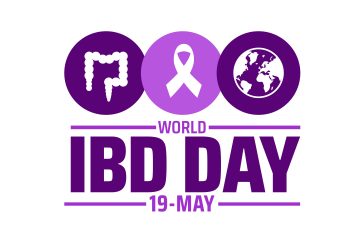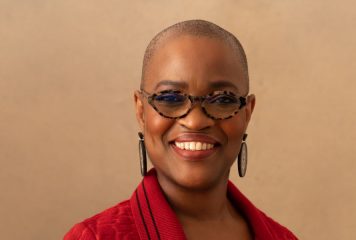February is American Heart Month, a time when we pause to reflect on cardiovascular care and celebrate ABIM Board Certified cardiologists for the life-saving work that they do. Heart disease kills more than 650,000 people each year in the United States. In non-COVID times, that’s one in four deaths.
While some heart conditions can be improved with preventive measures, including a healthy diet, daily exercise and decreasing cigarette and alcohol consumption, others, such as congenital heart disease (CHD), are not modifiable with lifestyle changes. Congenital heart disease is a problem with the structure of the heart that is present at birth and can involve the heart’s walls, valves or arteries.
Not long ago, someone born with a congenital heart disease would not have had much of a future; few were expected to reach adulthood. Recent advances in medical procedures have changed that and today there are more adults living with CHD than children.
Adult Congenital Heart Disease (ACHD) has been an ABIM subspecialty since 2012. The first certification exam was administered in 2015 and is now offered every other year. Thanks to a community of doctors who saw the need and learned all they could about adult congenital heart disease, ACHD patients are able to live full lives.
Dr. Yuli Kim is one of those cardiologists who saw the growing need for a subspecialty and completed a two-year fellowship in adult congenital heart disease. She is a member of ABIM’s Cardiovascular Board and Adult Congenital Heart Disease Exam Committee. She serves as the medical director of the Philadelphia Adult Congenital Heart Center, as the fellowship director for the ACHD fellowship program at the Hospital of the University of Pennsylvania and teaches at the Perelman School of Medicine at the University of Pennsylvania. She says ACHD is a rewarding career, though there is a shortage of specialists available to work with the growing number of patients.
“It’s a relatively new subspecialty, there is still so much that is still unknown about ACHD, it intrigued me from an academic standpoint and it challenges me every day,” she said. “I love what I do, I love working with young adults and watching these incredible individuals live a full life. I am able to make an impact on an individual person in a very meaningful way.”
She noted that approximately one in 100 adults have congenital heart disease, making the likelihood good that someone in your friend group has CHD that you don’t know about.
The relationship with patients begins in the teenage years, when they transition from their pediatric cardiologist—whom they have known for their entire life—to an ACHD specialist, a process that Dr. Kim says takes time, patience and commitment. “It’s a process of helping young people on the cusp of adulthood to understand their disease, their medications and how they want to live their lives,” Dr. Kim said. “They have a lot to look forward to, but they do have a chronic illness and they need to learn how to manage it. It’s all about trying to help patients balance the things in life others may take for granted.”
She says often parents come to the initial appointments with baby pictures to share with her, and she learns of the trauma experienced by the entire family. She helps guide them and, when necessary, holds their hands during difficult and emotional times. “Gaining the trust of these families is difficult, you have to follow in the footsteps of their prior cardiologist who has kept them alive,” she said. “You really build strong relationships with your patients and I love that.”
Dr. Kim comes from a medical family—her father was a cardiac anesthesiologist and her mother a nurse—but she initially pushed against following her family into the medical profession. Instead, she began college as an English major and planned on becoming a literature professor before deciding she could have more of an impact as a doctor and switching to pre-med halfway through. Not one to follow a linear path, she spent a year studying in London, where she took some pre-med classes. She enjoyed London so much, she returned after graduation for a gap year during which she worked in retail and played in a band.
“I have always followed my interests and college is such an important time to pursue and explore a variety of subjects and disciplines, especially in a liberal arts school. I think it is so important to emphasize that a career does not have to take a linear path,” she said. “My English degree serves me well in my current job, I have found, and the gap year, where I literally worked at the Gap, was an opportunity to work and live in a vibrant, culturally-rich international city.”
Over the years Dr. Kim has become more active in working toward eliminating health care disparities, including lobbying members of Congress on behalf of her patients who have preexisting conditions, and participating in White Coats for Black Lives demonstrations in Philadelphia.
“Historically, physicians have been somewhat apolitical. We don’t ‘take sides,’” she said. “This stance is no longer compatible with our role in modern American society. It’s not enough to simply ‘do no harm’ and I feel as physicians we are obligated to actively prevent harm and promote health and healing.”
While she loves her job and the lifelong learning it comes with, she said it does sometimes take an emotional toll. The hardest part of being an ACHD physician, she said, is you sometimes have to give difficult news, like the need for a 27-year-old to have a heart transplant or end-of-life care. “Those are hard conversations to have with someone who is supposed to be in the prime of life,” she said.
On the opposite side are the moments of pure joy when she is able to help individuals accomplish their life goals.
“I get to meet all sorts of people who have come through amazing odds and I get to watch them go through all these incredible things in life—graduate high school, go to college, get married—and I get to be a part of it. I get to see all sorts of things that contextualize illness and I think that is really important. Every person has a story and I get to be a part of that.”



